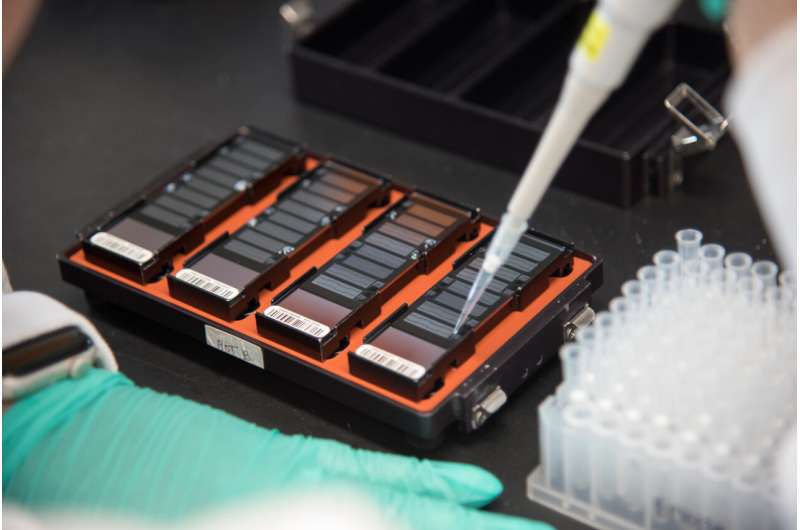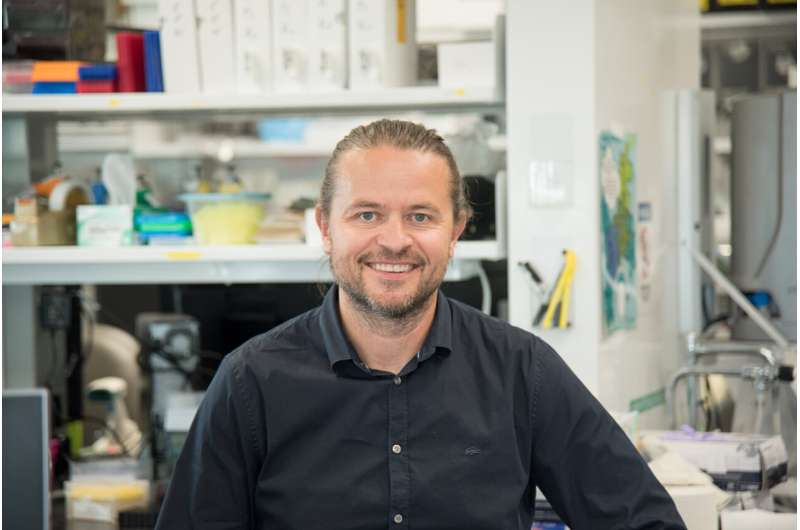This article has been reviewed according to Science X's editorial process and policies. Editors have highlighted the following attributes while ensuring the content's credibility:
fact-checked
peer-reviewed publication
trusted source
proofread
World first discoveries allow researchers to accurately diagnose prenatal exposure syndromes and birth disorders

Researchers at London Health Sciences Centre (LHSC) and Lawson Health Research Institute are using advanced technology and artificial intelligence (AI) to diagnose rare diseases and prenatal exposure-related birth abnormalities in two studies published today, one study in American Journal of Human Genetics and the other in Genetics in Medicine.
The research uses technology called EpiSign, which was developed by Dr. Bekim Sadikovic, Lawson Scientist at LHSC. EpiSign leverages AI to measure a patient's epigenome—a unique chemical fingerprint that every person has on top of their DNA that is responsible for turning genes on or off. EpiSign can currently be used to help diagnose more than 100 genetic diseases that were previously difficult to diagnose.
In one of two newly published studies, Dr. Sadikovic's team has found that EpiSign can be used to accurately identify patients affected by birth disorders called recurrent constellation of embryonic malformations (RCEMs). Since their discovery more than 70 years ago, attempts to identify the cause and specific diagnostic markers for RCEMs have been unsuccessful, making it challenging to provide patients and families with accurate diagnoses. EpiSign can now be used to accurately identify RCEMs for the first time using a blood test.
"Reaching an early and accurate diagnosis can be life-changing. This is a major breakthrough that allows physicians to provide earlier and more accurate diagnosis, resulting in improved disease management," said Dr. Sadikovic, who is also Research Chair in Clinical Genomics and Epigenomics at the Archie and Irene Verspeeten Clinical Genome Centre at LHSC. "It also has the potential to lead to health system cost savings since many patients spend years and even decades being tested to rule out other potential diseases with similar symptoms."

In the other study, Dr. Sadikovic's team used EpiSign technology for the first time to develop an accurate biomarker for a group of disorders called fetal valproate syndrome, which is caused by prenatal exposure to toxic levels of medication that may be used to treat bipolar disorder and migraines, or to control seizures in the treatment of epilepsy. It can result in neurodevelopmental disorders in infants, including learning, communication and motor disorders, autism, and intellectual disabilities.
"This is a significant breakthrough as it's the first time the technology has been used to aid in diagnosis of a disease caused by environmental factors rather than genetics," explained Dr. Sadikovic. "It highlights how epigenetics can be influenced by environmental and lifestyle factors, including diet, exercise and exposure to toxins."
The research is ongoing as Dr. Sadikovic and his team, in collaboration with the global EpiSign Discovery Research network, are currently studying and developing biomarkers for more than 700 rare disorders. He noted the potential of this research is endless, showing promise for use in the diagnosis, prognosis and treatment of many other diseases and disorders, including cancer.
"One in 20 people have a rare disease that could present at any point in their lives and can be caused by genes, environmental exposures, or their combined effects," he noted. "We can help diagnose a growing number of genetic diseases and, now for the first time, we can look beyond the genome and accurately measure the impact of the environment."
These studies are a collaborative effort involving multidisciplinary teams in Canada, the United States, the United Kingdom and Europe.
More information: Sadegheh Haghshenas et al, Identification of a DNA methylation episignature for recurrent constellations of embryonic malformations, The American Journal of Human Genetics (2024). DOI: 10.1016/j.ajhg.2024.07.005
Sadegheh Haghshenas et al, Discovery of DNA methylation signature in the peripheral blood of individuals with history of antenatal exposure to valproic acid, Genetics in Medicine (2024). DOI: 10.1016/j.gim.2024.101226



















